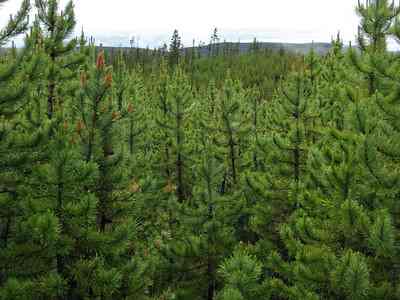14 Causes of Global Warming Explained: Natural and Anthropogenic
Causes of Global Warming include: Fossil Fuel Combustion; Industrialization; Deforestation; Agriculture; Transportation; and Volcanic Eruption.
Considering the importance of Global Warming in our society today, it is very important to identify and understand the causes of this phenomenon.
This article discusses the causes of Global Warming, from various perspectives, which include;
3). Natural Causes of Global Warming
4). Anthropogenic Causes of Global Warming
Key Points in this Article:
– Global Warming is an environmental challenge involving rising atmospheric temperatures close to the Earth’s surface
– The causes of Global Warming can be grouped into Natural and Anthropogenic (human-induced or manmade)
– Natural Causes include natural forest fires, permafrost, volcanic eruption, solar variations, and evaporation
– Anthropogenic Causes include;
a). Fossil Fuel Combustion
b). Industrialization
c). Deforestation
d). Excessive Fishing
e). Agriculture
f). Transportation
g). Power Generation
h). High Consumerism Rate
i). Poor Waste Management
The events that result in Global Warming, include the accumulation of greenhouse gases and air pollutants like aerosols, carbon dioxide, methane, sulfur dioxide and water vapor, in the atmosphere.
After these gases and pollutants have accumulated, they actively absorb solar radiation which is reflected or emitted from the Earth’s surface. As a result, rather than escape into outer space, the absorbed solar radiation remains close to the Earth’s surface, making the environment grow hotter [20].
The gases and pollutants, often referred to as Greenhouse Gases, are able to stay for several years in the atmosphere, thereby prolonging the period of heating. In general, the process is known as the Greenhouse Effect [14].
Causes of Global Warming
The causes of Global Warming can be grouped broadly into Natural and Anthropogenic (Man-made) causes. These two groups are discussed below;
* Natural Causes of Global Warming
1). Permafrost
Permafrost is simply any land area or soil, which remains completely frozen for a period of at least two years [12].
Such land areas constitute up to 25% of the entire Northern Hemisphere [21]. When soil gets frozen, metabolic gases like carbon dioxide, nitrous oxide and methane, are trapped in the ice. The melting of such permafrost soils releases the trapped gases, which are subsequently released into the atmosphere [5].
Because permafrost stores large volumes of greenhouse gas for prolonged periods of time, its melting and release of the trapped gases has significant effects on the atmosphere.
2). Natural Forest Fires
In recent years, forest fires have become a very prominent and frequent event [3]. Forest fires have significant impacts on the environment.
The burning of vegetation usually releases smoke which is rich in carbon content. Other gases like methane are also released in large quantities, into the atmosphere. This leads to an increase in the rate of trapping or absorption of solar radiation, which causes Global Warming.
Aside greenhouse gases, natural forest fires also produce soot and toxic gases that cause air pollution.
3). Evaporation and Water Vapor
Evaporation is a natural process, by which water molecules change from liquid to gaseous state. Natural evaporation mostly affects large water bodies like rivers, lakes and oceans.
Recently, human activities like irrigation have contributed to releasing water vapor into the atmosphere [2]. However, the contribution of human activities is relatively small compared to natural evaporation.
Water vapor is a significant cause of Global Warming, as it is estimated to account for approximately 60% of total warming [7]. Although natural evaporation leads to Global Warming and Climate Change, it is also driven by Global Warming. With further increase in temperature on the Earth’s surface, the rate of evaporation (and release of water vapor into the atmosphere) also increases.
4). Solar Activity
Naturally, the intensity of solar radiation on the Earth’s surface varies with time [13].
These variations can be described using various terms, like sunspots and solar flares [16]. In extreme cases, sunspots and solar flares, as well as other forms of solar variations, are capable of contributing to Global Warming and Climate Change, by causing a rise in average temperatures on the Earth’s surface [19].
There are still ongoing enquiries with respect to the actual impact of sunspots and solar flares on Global Warming. It is very likely that this impact is very small, since solar variations have been known to occur since prehistoric times.
5). Volcanic Eruption
Volcanic eruption is seen as a potential contributor to Global Warming, because it usually involves the release of large volumes of carbon dioxide into the atmosphere.
However, vocalic eruption also releases materials like ash ad sulfuric oxide, that may have cooling effects on the environment. This implies that the effects of volcanic eruption rather alter the climate than directly cause Global Warming.
* Anthropogenic Causes of Global Warming
It is widely agreed that human activities are the main drivers of Global Warming. Some of these activities are discussed below;
1). Burning of Fossil Fuels
Fossil fuels are very important to our society today. They are utilized in most sectors of industry, and everyday life, including transport, manufacturing, commerce, and power generation [8].
Generally, fossil fuels tend to have some negative effects on the environment. These effects include release of toxic gases into the atmosphere, and pollution of soil and water [6].
The main examples of fossil fuels are discussed as follows;
– Crude Oil
Also known as petroleum, crude oil is a fossil fuel which occurs in liquid form; and is composed mainly of hydrocarbons [17].
Crude oil usually occurs in the pores, crevices and cracks of rocks, as well as in oil shale and tar sands. The extraction of crude oil is usually done by either drilling (onshore or offshore), or mining. After extraction, the crude oil is taken to refineries for processing, to derive propane, gasoline, jet fuel, bitumen, paint and plastics [10].
In spite of the general knowledge that petroleum has a negative impact on the environment, there has been a sharp rise in the rate of its extraction and use. This has been due to different causes, including the reducing cost of gasoline, the increasing rate of industrialization and population growth, and the development of new and more efficient methods of extraction like hydraulic fracking.
– Coal
Coal refers to a solid, rocky and naturally-occurring form of carbon, which can be found in various forms, called peat, lignite, anthracite, bituminous and sub-bituminous coal.
This sedimentary rock occurs abundantly in different parts of the world, including China, West Africa, and the United States [18]. Coal may be extracted by either surface or underground mining. These activities all release large quantities of methane [15].
Although it is not currently being used as a major source of energy, coal is a carbon-intensive fossil fuel which produces large quantities of carbon dioxide and methane.
– Natural Gas
The primary component of natural gas is methane [11].
Natural gas may be described as either unconventional, or conventional. Unconventional natural gas refers to the category which is located in positions that are not easy to explore, or access. The gaseous deposits usually require enhanced recovery methods like hydraulic fracking, for their extraction. On the other hand, conventional natural gas refers to natural gas that occurs in locations where it can be easily accessed by drilling [9].
In many parts of the world, including the United States, natural gas serves as a major energy source for electricity production. Compared to other fossil fuels, natural gas produces very little gaseous emissions. Its usage however increases problems of greenhouse gas emission and environmental pollution.
2). Industrialization
Since the advent of industrialization over a century ago, the activities carried out in industries have been identified as one of the main causes of Global Warming.
In addition to releasing greenhouse gases, industries produce waste materials that are generally hazardous to the environment [1]. While gaseous and liquid industrial wastes may pollute soil and water, solid industrial wastes are often disposed in landfills, where they cause the emission of methane and leachate fluid.

3). Deforestation
Referring to the removal of trees, deforestation is carried out for two main purposes.
The first of these is to create living space for the ever-increasing human population. The second purpose is to collect timber for various uses. Although it is mainly a human-induced process, deforestation may also occur in nature, for example, through naturally-induced forest fires.
Tropical vegetation generally consumes carbon dioxide and releases oxygen in the process of photosynthesis. This carbon is stored in the parts of plants like roots and trunks by the process of sequestration [22].
Deforestation releases the stored carbon into the atmosphere, by either combustion or decomposition. It is believed that deforestation is responsible for up to 10 percent of Global Warming on Earth. Recently, efforts have been fairly successful in reducing the rate of deforestation.
The rate of deforestation varies across the various parts of the world where forest vegetation occurs. Tree-planting is one of the most effective measures for reducing deforestation and its effects on the climate, as trees act as carbon sinks for managing atmospheric CO2 levels.
4). Excessive Fishing Activity
Human consumption of fish (and other marine organisms), may also contribute to Global Warming.
Fish is well known as a source of protein. The growing demand for these organisms (as well as environmental constraints like ocean acidification) has reduced their population in water bodies.
Aquatic organisms generally participate in carbon sequestration, containing about 38,000 Giga-tons of carbon. A decline in their population therefore implies that carbon content in the atmosphere will increase.
5). Agriculture
Agriculture is estimated to contribute more than 20 percent of total greenhouse gas emissions globally.
This observation is mainly due to the production of methane and nitrous oxides from manure, fertilizer, livestock, agricultural processing plants, among others. Food waste is another cause of methane and CO2 production, and must be addressed.
6). Transport
The transportation sector is known to produce large volumes of greenhouse gases like sulfuric oxide, methane, and carbon dioxide [4].
Because most vehicles and other means of transportation, are driven by the burning of fossil fuels, greenhouse emission occurs as a consequence of using these vehicles.
The introduction of electric vehicles into the automobile market has been a promising development, as it can result in a decrease in volume of gaseous emissions, which will in turn reduce the rate of Global Warming.
7). Power Generation
Fossil fuels are used in most power plants to generate electricity.
This leads to environmental pollution, part of which is greenhouse gas emission.
8). High Rate of Consumerism
Innovation and growth in the manufacturing sector, have both made it possible for consumers to afford a wide variety of products. Because of the demand by the growing population for manufactured goods, and the efforts by companies to make profits, the rate of production and consumption has grown seriously over the years.
At the same time, the quality and durability of manufactured products have reduced. This has led to a chain of unsustainable usage of products, which are manufactured, purchased and disposed rapidly.
Because the production and disposal of used products produces greenhouse gases in both cases (production releases gases due to fossil fuel combustion; disposal releases gases due to decomposition), high rate of consumerism has bad effects on the climate, by contributing to Global Warming.
To address this problem will require efficient recycling practices, as well as efforts to produce less goods with higher quality and durability.
9). Waste Management
In this case, it is the poor approach to waste management that contributes to Global Warming.
As we have discussed briefly with respect to consumerism, the high rate of production and consumption in the world today, have led to release of large volumes of greenhouse gases and other pollutants into the atmosphere.
In many developing countries of the world, manufacturing rates have risen drastically. However, there are generally no efficient infrastructure for waste management in these regions. Recycling is also not done sufficiently or efficiently, leading to environmental challenges.
To address the problem of waste production, some measures which are required include reducing that rate and quantity of production; reusing used products, and recycling the unusable ones.
Conclusion
Causes of global warming are; wildfires, permafrost, volcanic eruption, solar variations, evaporation, industrialization, fossil fuels, deforestation, agriculture, electricity generation, transportation, waste mismanagement and high consumption rates.
The natural causes which have been discussed, do not contribute significantly to Global Warming, compared to anthropogenic causes. These anthropogenic or manmade causes include fossil fuel combustion and waste production, among others.
References
1). Aldag, J. R. (2014). “Toxic Waste.” Available at: https://www.britannica.com/science/toxic-waste. (Accessed 30 November 2021).
2). Brahic, C. (2005). “Human activity changes global water vapour patterns.” Available at: https://www.scidev.net/global/news/human-activity-changes-global-water-vapour-pattern/. (Accessed 30 November 2021).
3). Brandlin, A. S. (2018). “How climate change is increasing forest fires around the world.” Available at: https://m.dw.com/en/how-climate-change-is-increasing-forest-fires-around-the-world/a-19465490. (Accessed 30 October 2021).
4). Chłopek, Z.; Bebkiewicz, K. (2017). Model of the structure of motor vehicles for the criterion of the technical level on account of pollutant emission. Eksploatacja i Niezawodnosc Maint. Reliab., 19, 501–507. Available at: http://yadda.icm.edu.pl/yadda/element/bwmeta1.element.baztech-84885e0b-05a3-413d-bc55-943f4c827255. (Accessed 30 November 2021).
5). Cho, R. (2018). “Why Thawing Permafrost Matters.” Available at: https://news.climate.columbia.edu/2018/01/11/thawing-permafrost-matters/. (Accessed 30 November 2021).
6). Denchak, M. (2018). “Fossil Fuels: The Dirty Facts.” Available at: https://www.nrdc.org/stories/fossil-fuels-dirty-facts. (Accessed 30 November 2021).
7). Dotson, A. (2010). “Water Vapor, CO2, and Global Warming.” Available at: https://iedro.org/articles/water-vapor-and-global-warming/. (Accessed 30 November 2021).
8). EESI (2021). “Fossil Fuels.” Available at: https://www.eesi.org/topics/fossil-fuels/description. (Accessed 30 November 2021).
9). EIA (2020). “Natural gas explained.” Available at: https://www.eia.gov/energyexplained/natural-gas/. (Accessed 30 November 2021).
10). EIA (2021). “Oil and petroleum products explained.” Available at: https://www.eia.gov/energyexplained/oil-and-petroleum-products/. (Accessed 30 November 2021).
11). EPA (2021). “Importance of Methane.” Available at: https://www.epa.gov/gmi/importance-methane. (Accessed 30 November 2021).
12). Encyclopedia.com (2018). “Permafrost.” Available at: https://www.encyclopedia.com/earth-and-environment/geology-and-oceanography/geology-and-oceanography/permafrost. (Accessed 30 November 2021).
13). Lindsey, R. (2009). “Climate and Earth’s Energy Budget.” Available at: https://earthobservatory.nasa.gov/features/EnergyBalance. (Accessed 30 November 2021).
14). Mann, E. M.(2021). “Greenhouse Gas Atmospheric Science.” Available at: https://www.britannica.com/science/greenhouse-gas. (Accessed 30 November 2021).
15). Munsif, R.; Zubair, M.; Aziz, A. (2021). Industrial Air Emission Pollution: Potential Sources and Sustainable Mitigation. Environmental Emissions. Available at: https://doi.org/10.5772/intechopen.93104. (Accessed 30 November 2021).
16). NASA (2021). “What are sunspots and solar flares?” Available at: https://spaceplace.nasa.gov/solar-activity/. (Accessed 30 November 2021).
17). National Geographic (2021). “Petroleum.” Available at: https://www.nationalgeographic.org/encyclopedia/petroleum/. (Accessed 30 November 2021).
18). National Geographic (2021). “Coal.” Available at: https://www.nationalgeographic.org/encyclopedia/coal/. (Accessed 30 November 2021).
19). Noss, D. (2009). “The Role of Sunspots and Solar Winds in Climate Change.” Available at: https://www.scientificamerican.com/article/sun-spots-and-climate-change/. (Accessed 30 November 2021).
20). Nunez, C. (2019). “What is Global Warming, Explained.” Available at: https://www.nationalgeographic.com/environment/article/global-warming-overview. (Accessed 30 November 2021).
21). Pearce, R. (2021). “What is Permafrost?” Available at: https://earth.org/what-is-permafrost/. (Accessed 30 November 2021).
22). UCSUSA (2008). “Tropical Deforestation and Global Warming.” Available at: https://www.ucsusa.org/resources/tropical-deforestation-and-global-warming. (Accessed 30 November 2021).


